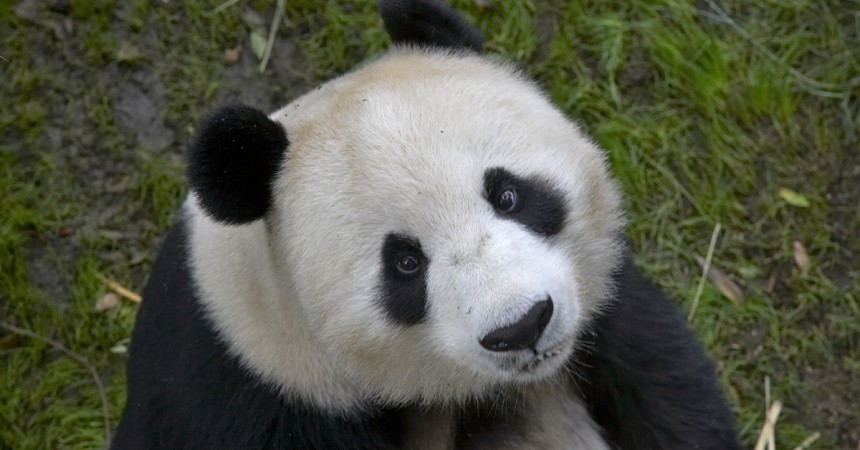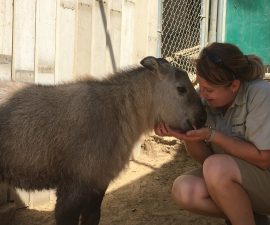San Diego Zoo veterinarians and panda keepers gathered early this morning behind the giant panda exhibit for an ultrasound examination of 24-year-old female Bai Yun. Veterinarians used ultrasound technology to look for signs of fetal development in Bai Yun’s reproductive track, including the uterine horns, and signs of an embryonic sack. The staff is monitoring the mother of six pandas for a possible pregnancy, following an artificial insemination procedure that took place four months ago.
The 240-pound panda was lying still while being fed honey-water from a squeeze bottle during the examination, which lasted about 20 minutes.
“As I’m feeding Bai Yun during the exam, I look for different things,” said Kathy Hawk, senior keeper at the San Diego Zoo. “If her eyes look soft, it says to me that she is content with what I’m feeding her and comfortable with the veterinarian during the procedure. This morning Bai Yun made it clear to me that red apples were out and that honey-water is in – she liked the honey-water.”
Animal care staff will continue to monitor Bai Yun with regular ultrasounds, thermal imaging, and hormone testing over the next few weeks. San Diego Zoo staff members are keeping the area around Bai Yun’s den quiet, and only essential staff is being allowed in the area.
Following natural breeding sessions between Bai Yun and Gao Gao in March 2015, which didn’t appear to animal care staff to be successful, it was decided, in collaboration with our Chinese conservation partners, to conduct artificial insemination with sperm stored in the Frozen Zoo®. The sperm used was from giant panda Shi Shi, who was the first breeding partner for Bai Yun. His sperm was used during an artificial insemination procedure with Bai Yun in 1999. That procedure produced the first cub born at the San Diego Zoo – and the first in the United States – a female named Hua Mei. In 2003, Shi Shi returned to China for his retirement years, and he died in 2008. The San Diego Zoo has a record of success, with six cubs being born in San Diego since 1999.
A panda’s fertilized egg remains suspended until a trigger in the environment indicates it is time to implant. The trigger is still unknown to scientists. Giant pandas routinely delay the implantation of the fetus as long as four months. After implantation, the fertilized egg begins to develop. Impending birth is predicted on the basis of behavioral, hormonal, and anatomical changes documented by scientists at the San Diego Zoo’s Institute for Conservation Research.
If a cub is born, Bai Yun will be the oldest giant panda known to give birth to a cub. The mother and the cub would be expected to remain in the den for four to five months before returning to a public exhibit.
Newborn giant panda cubs are born without sight and weigh an average of 4 ounces (112 grams) when they are born. They are pink with thin white fur that will gray before the trademark black-and-white markings develop, within the first months. The sex of the cub would not be known until animal care staff members examine the cub, which would not be expected to happen until the cub approached two months old.
Bringing species back from the brink of extinction is the goal of San Diego Zoo Global. As a leader in conservation, the work of San Diego Zoo Global includes on-site wildlife conservation efforts (representing both plants and animals) at the San Diego Zoo, the San Diego Zoo Safari Park, and San Diego Zoo Institute for Conservation Research, as well as international field programs on six continents. The work of these entities is inspiring children through the San Diego Zoo Kids network, reaching out through the Internet and in children’s hospitals nationwide. The work of San Diego Zoo Global is made possible by the San Diego Zoo Global Wildlife Conservancy and is supported in part by the Foundation of San Diego Zoo Global.
CONTACT: SAN DIEGO ZOO GLOBAL PUBLIC RELATIONS, 619-685-3291





